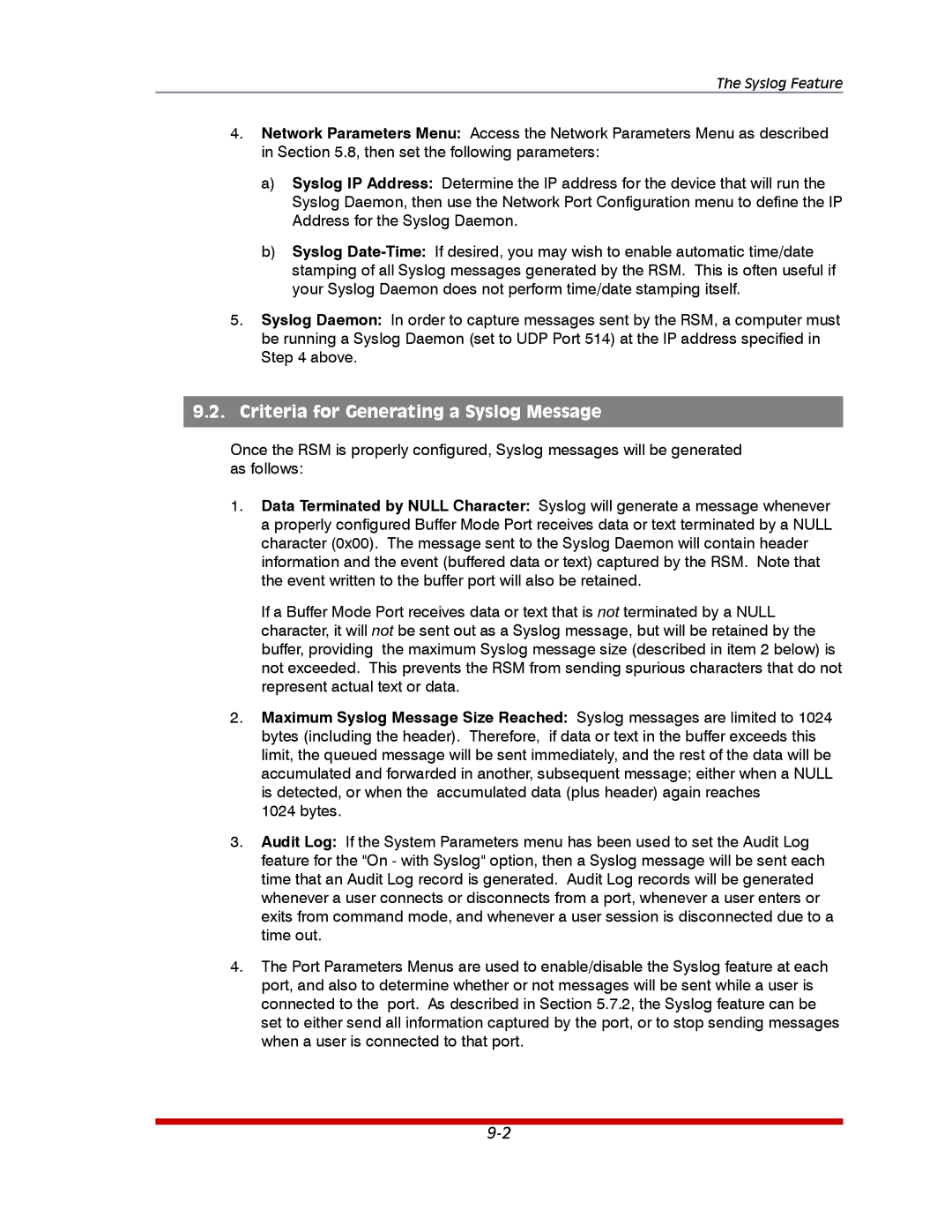
The Syslog Feature
4.Network Parameters Menu: Access the Network Parameters Menu as described in Section 5.8, then set the following parameters:
a)Syslog IP Address: Determine the IP address for the device that will run the Syslog Daemon, then use the Network Port Configuration menu to define the IP Address for the Syslog Daemon.
b)Syslog
5.Syslog Daemon: In order to capture messages sent by the RSM, a computer must be running a Syslog Daemon (set to UDP Port 514) at the IP address specified in Step 4 above.
9.2.Criteria for Generating a Syslog Message
Once the RSM is properly configured, Syslog messages will be generated as follows:
1.Data Terminated by NULL Character: Syslog will generate a message whenever a properly configured Buffer Mode Port receives data or text terminated by a NULL character (0x00). The message sent to the Syslog Daemon will contain header information and the event (buffered data or text) captured by the RSM. Note that the event written to the buffer port will also be retained.
If a Buffer Mode Port receives data or text that is not terminated by a NULL character, it will not be sent out as a Syslog message, but will be retained by the buffer, providing the maximum Syslog message size (described in item 2 below) is not exceeded. This prevents the RSM from sending spurious characters that do not represent actual text or data.
2.Maximum Syslog Message Size Reached: Syslog messages are limited to 1024 bytes (including the header). Therefore, if data or text in the buffer exceeds this limit, the queued message will be sent immediately, and the rest of the data will be accumulated and forwarded in another, subsequent message; either when a NULL is detected, or when the accumulated data (plus header) again reaches
1024 bytes.
3.Audit Log: If the System Parameters menu has been used to set the Audit Log feature for the "On - with Syslog" option, then a Syslog message will be sent each time that an Audit Log record is generated. Audit Log records will be generated whenever a user connects or disconnects from a port, whenever a user enters or exits from command mode, and whenever a user session is disconnected due to a time out.
4.The Port Parameters Menus are used to enable/disable the Syslog feature at each port, and also to determine whether or not messages will be sent while a user is connected to the port. As described in Section 5.7.2, the Syslog feature can be set to either send all information captured by the port, or to stop sending messages when a user is connected to that port.
